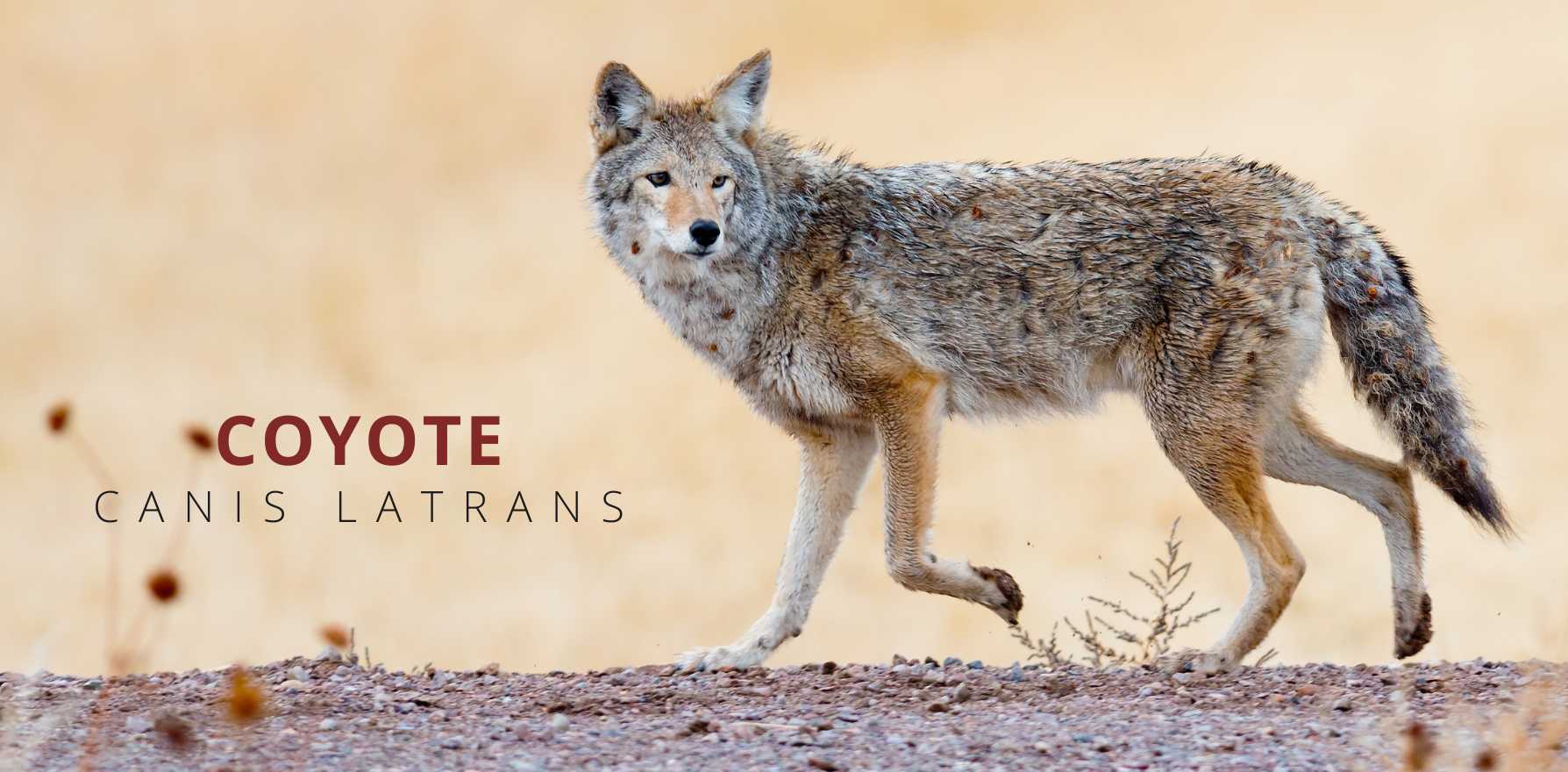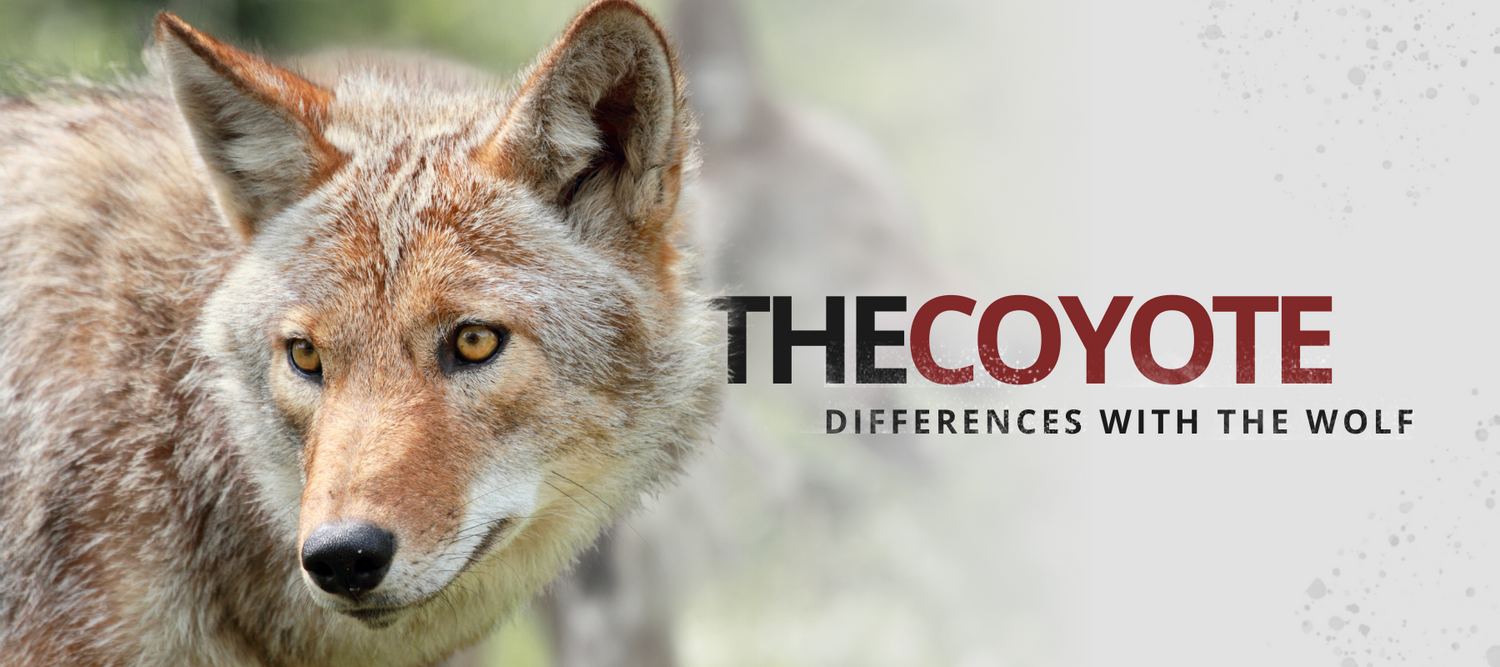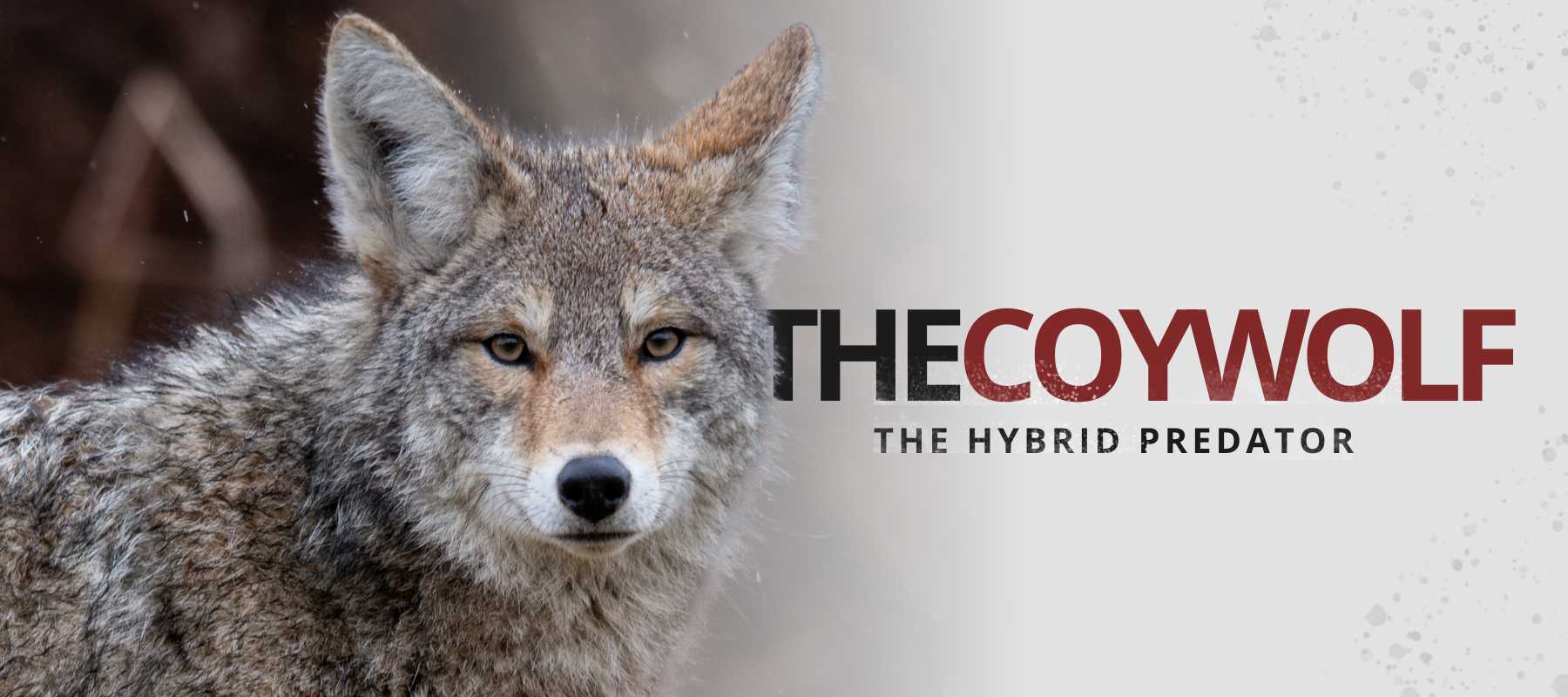How to differentiate the coyote from the wolf? Are they part of the same species? How to recognize their howls? So many questions that we will elucidate in this blog post!
Discover 10 incredible differences between the coyote and the gray wolf. At the end of this article, you will be able to differentiate between the two species of canids without any difficulty. For those who are in a hurry, here is a summary table with some tips to differentiate the wolf from the coyote. We will then go on with all the particularities that differentiate both species.
| CHARACTERISTICS | WOLF | COYOTE |
|---|---|---|
| Coat | Gray, black, white, cream | Gray, reddish brown, |
| Face | Large muzzle | Long and thin muzzle |
| Ears | Small rounded ears | Long pointed ears |
| Tail | Tail straight while running | Tail down while running |
| Weight | 70-150 lbs | 15-50 lbs |
| Lenght | 4 ½ to 6 ½ feet | 3 ½ to 4 ½ feet |
WHAT IS A COYOTE?
The coyote (Canis latrans) is a mammal belonging to the family Canidae. It belongs to the Canis species like the wolf, the dingo and the jackal. The coyote is one of seven representatives of the canid family found in Canada along with the wolf, red fox, polar fox, grey fox, swift fox and dog.
The coyote is a canid that lives only on the American continent. It is a discreet animal that sometimes lives in close contact with humans. It is an opportunist that can hunt rabbits as well as digging through the garbage.
Note that canids are an extremely homogenous family with an inter-fertility that undermines the concept of species. Even if a wolf does not normally mix with a coyote, it turns out that the two animals are nevertheless capable of producing a fertile hybrid. Some scientists even suggest that the red wolf (Canis rufus), a rare animal in North America, is in fact the result of such hybridization. Same for the dog, the coyote can easily cross with our pets.

COYOTE COMPARED TO WOLF
1. Coyote are smaller than wolves
The wolf vs coyote size is significantly different. With a maximum of 4 ½ feet length and 24 inches at the shoulder, it is already a good-sized canid, but it is much smaller than the wolf. They weigh between 20 and 50 pounds, which is much bigger than foxes for example.
In comparison, an adult gray wolf can weigh between 70-150 pounds with a length of 4 ½ to 6 ½ feet from nose to tail tip. 🐺
2. Coyotes are physically different
From an anatomical point of view, the classification within canids is not usurped.
- Coat: The coat ranges from gray to reddish-brown, sometimes almost orange. There may be variations in color depending on geographical location.
- Muzzle: Coyote's muzzle is long and fine. The top of the snout and the forehead of the coyote form a nearly continuous line. It has a more pointed nose than that of the dog. Grey wolves have a wider muzzle. The coyote's sense of smell is highly developed and is used to detect prey, carrion and smells left by other coyotes as territorial markers.
- Ears: Proportionately large in relation to the head, the coyote has long, pointed ears. Conversely, the gray wolf has smaller, rounded ears.
- The tail: The coyote has a bushy tail. At the base of their tail is a blue-black reflection. Unlike wolves, they keep their tail between their thighs during the run. As for the gray wolf, it keeps its tail straight while running. Both have a scent gland in their tail that allows them to mark their territory.

3. The coyote howl is different
What best characterizes the coyote is its barking and howling which is a series of barks in a high and piercing tone. Its sound intensity and range of vocalizations were the origin of its binomial name Canis latrans, which means "barking dog".
The coyote can also yelp, growl, moan and scream. Usually silent during the day, it can be heard at any time from sunset to sunrise, but especially at dusk and dawn.🌙
If there are several coyotes in the same neighborhood, the howling of one of them unerringly triggers the howling of the others, which can lead to real howling concerts. Two coyotes howling in unison can give the impression of a chorus of 12 or more voices. Also, the coyote's cry may seem to come from further away than the animal's location.
There are as many as 11 different sounds made by the coyote. The most common coyote calls are barking, moaning, barking, howling or growling.
The wolf's howl is typically lower and can include barking as well as growling. Each wolf has a unique voice pattern that allows them to distinguish between themselves when howling to communicate with their pack.
Here is the coyote vs wolf howl: 🎵
4. The coyote likes solitude
The Coyote mainly live in a pack can definitely lead a solitary life. They are independent and can stay alone during a part of their lives. They decide whether or not to join a pack.
The wolf is a social animal that lives in a pack that operates on the principle of a hierarchy. A pack can be composed of 2 to 25 wolves. They are among the best mammals that communicate frequently. There is always a dominant couple that leads the pack and makes the decisions. The lone wolf is a myth, alone, a wolf could not survive for a long time in the wild. 🏔️
5. Coyotes hunt smaller prey
Because of their size and weight, coyotes hunt mainly small animals. Their diet is most often based on small mammals. Rodents and insectivores, such as voles or shrews, are particularly eaten, but the coyote can also attack much larger prey. The Lagomorphs (rabbits and hares), birds, raccoons and sometimes deer are also part of its diet.🦌 In the case of deer, these are pack attacks, with prey being folded down and then grabbed by the throat by the most powerful coyotes.
However, its broad food spectrum is further enhanced by its ability to live in cities and adapt to urban environments. In fact, the coyote can prey on city rats in the same way as it does on garbage cans, and more simply consume all kinds of meat food.
The coyote belongs to the order of carnivores, a group of mammals that contains well known predators, for example canids, felines, ursidae, mustelids. These animals are characterized by the presence of carnivorous teeth. The last upper premolar and the first lower molar are modified: they are sharp and function like two blades of a chisel that close, allowing these animals to cut the flesh of their prey or carrion. Carnivores, on the other hand, are unable to chew, and swallow large pieces of flesh in a single bite.
The gray wolf is a carnivorous mammal. He hunts in packs and prey on larger prey such as bighorn sheep, deer, wild boar, reindeer, elk, and even buffalo. They can eat up to 18 lbs of meat per day, which is why they hunt larger prey. Their diet can vary depending on the region.
6. The coyote is faster than the wolf
Agile and light, the coyote runs on average at 50km/h and can reach a running speed of up to 70km/h! On the other hand, the gray wolf has an average speed of 40km/h and can reach speeds of up to 60km/h over short distances.
7. The wolf has bigger paws
A coyote track is about 2.5 inches long by 2 inches wide, whereas a wolf track is about 4.25 inches long by 3.75 inches wide. 🐾
Adult wolf tracks are larger and more robust than adult coyote tracks. The legs of young wolves grow very quickly. In comparison, even the tracks of 3 months old cubs are larger than those of coyotes.
Due to their larger body size, wolves have more pronounced and conspicuous tracks, especially in the toe area where the tracks of a wolf are clearly more visible.
Wolves have the claws on the front legs longer than those on the hind legs, but they are usually clearly visible on both.

8. Coyotes cubs are independent quickly.
Coyotes mate from mid-January to February and have a gestation period of 60 days. The female gives birth to 2-10 coyotes cubs that can survive with their absent mother for 7 weeks. In 7 months, the cubs can accompany their mother on hunting trips. They quickly become autonomous and seek their own territory in their first year.
Concerning the grey wolf, the mating season is variable depending on the wolves' geographic location. In warm countries the Canis Lupus mate as early as January. While in the polar regions, the wolf rut will only begin in spring (March, April).
The she-wolf has only one mating period per year. After a gestation period of about 60 days, the wolf gives birth in a den that has been set up and is close to a water area. As soon as the cubs are strong enough they will follow the pack on the move and also at the hunting sessions, where they will record the gestures and techniques of the adults. Around two to five years old they will leave the pack in search of partners and new territories.
9. The coyote lives only in North America.
Like gray wolves, coyotes can also adapt to a variety of habitats. However, coyotes lives in North American, whereas, wolves are also found in North and South America, Europe and Asia and various habitats including mountains, grasslands and deserts.
10. The coyote is not afraid of humans.
Coyotes are intelligent, adaptable and curious. They love to experiment and are especially opportunistic! They rarely seek confrontation but are not afraid of humans. Coyotes are attracted to places where they can find food. Hunting in an urban environment is therefore a learned behavior, just like hunting for pets or approaching humans.🚶🏻♂️
They do not cause any problems for residents and contribute significantly to the control of small rodents. Nevertheless, to live on good terms with these animals, we must understand and respect them. If a coyote approaches you, stay calm and wait for it to leave. If you feel threatened, make noise or sudden movements to scare it away.
Conversely, wolves are more fearful and fierce. They are wary of men and prefer to stay away from urban areas, hiding in forests and mountains.
Now that you know how to tell a wolf from a coyote, can you guess who's who in this coyote vs wolf picture below? Let us know in comment! 👇🏻

SUMMARY
Although they are both canids, the coyote vs wolf have physical and behavioral differences. Slimmer, smaller and more agile, the coyote can easily be distinguished by the color of its coat, its small size and its long, thin snout.
In addition to the similarities and differences between these two carnivorous, a new hybrid species resulting from a cross between a wolf and a coyote, has emerged in recent years, the coywolf!



